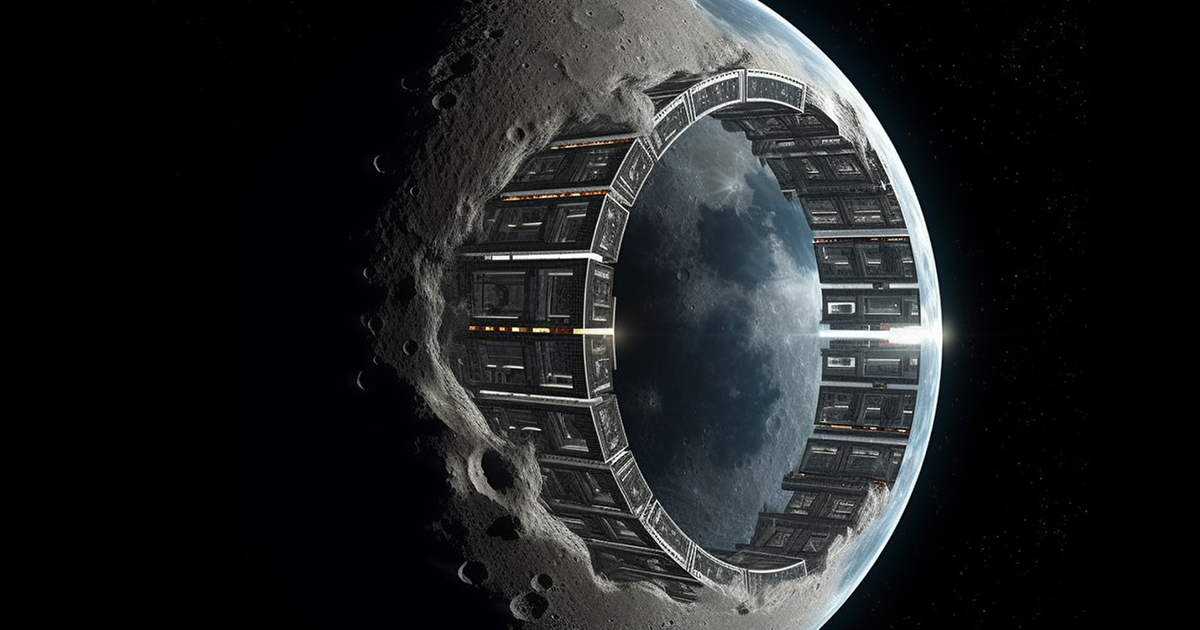Introduction:
The moon has always captivated humanity’s imagination. Its serene presence in the night sky, coupled with its enigmatic history, has fueled numerous speculations and theories. Among these, the notion of a hollow moon has gained attention, intriguing ancient astronaut theorists and curious minds alike. In this article, we delve into the intriguing claims presented in the History Channel’s “Ancient Aliens” Season 11 episode titled “The Hollow Moon.” We explore the evidence and questions surrounding this controversial theory that challenges conventional lunar science.
The Moon’s Surface: A Mosaic of Craters
The moon’s surface is a testament to its tumultuous past. Tens of thousands of impact craters, ranging in size, scar its landscape. Scientists attribute this lunar pockmarking to the absence of an atmosphere that would otherwise shield it from space debris. Unlike Earth, the moon lacks natural erosive forces, such as wind and water, which would gradually erase these celestial battle scars. However, it’s not just the sheer number of craters that has puzzled researchers; it’s their uniform depth.

As the transcript from “Ancient Aliens” suggests, lunar craters, both large and small, exhibit surprisingly consistent depths. In contrast, on a typical planetary body, you’d expect variations in crater depths depending on factors like the size of the impactor and the surface composition. This uniformity in lunar crater depth challenges established geophysics and raises questions about what lies beneath the moon’s surface.
The Resilient Barrier Beneath the Moon
One explanation for the uniformity in lunar crater depths proposed by ancient astronaut theorists is the presence of a resilient barrier beneath the moon’s rocky exterior. This barrier, some suggest, could be either an exceptionally hard rock or a metallic sphere. Either option would account for why craters do not penetrate deeper into the lunar surface.
However, this intriguing hypothesis raises a crucial question: why hasn’t mainstream science embraced it? The answer, proponents argue, lies in the implications of such a revelation. Acknowledging the presence of a metallic or exceptionally dense layer beneath the lunar surface could lead to a startling conclusion: the moon might be hollow.
The Moon Rings Like a Bell
One of the most perplexing pieces of evidence comes from the Apollo missions. On November 20th, 1969, during the Apollo 12 mission, astronauts intentionally crashed the launch vehicle back into the moon’s surface. The result was unexpected and astounding. The moon began to resonate like a giant bell, a phenomenon captured by seismographs for over an hour.
Subsequently, during the Apollo 13 mission, an even heavier part of the rocket was crashed into the moon, causing it to “ring” for over three hours and to a depth of over 20 miles. This seismic resonance was not what scientists had anticipated, and it continues to puzzle experts today.
The Hollow Moon Hypothesis
The moon’s composition predominantly consists of lightweight rock called basalts. While this rock type absorbs impacts effectively, it should not result in such pronounced seismic resonance. This unexpected reaction of the moon’s surface has led some to infer that the moon’s interior is hollow, or at least contains voids or cavities of some kind.
Video:
Conclusion: A Lunar Mystery
The idea of a hollow moon challenges our understanding of planetary physics and begs for further investigation. While mainstream science remains skeptical, the intriguing evidence presented by ancient astronaut theorists cannot be easily dismissed. As humanity continues to explore the cosmos, mysteries like the moon’s true nature remind us that there is still much to learn beyond our Earthly confines. Whether the moon is hollow or not, it serves as a testament to the enduring allure of space exploration and the limitless potential for discovery beyond our planet.

22 thoughts on “Exploring the Lunar Mystery: Is the Moon Hollow?”
Comments are closed.